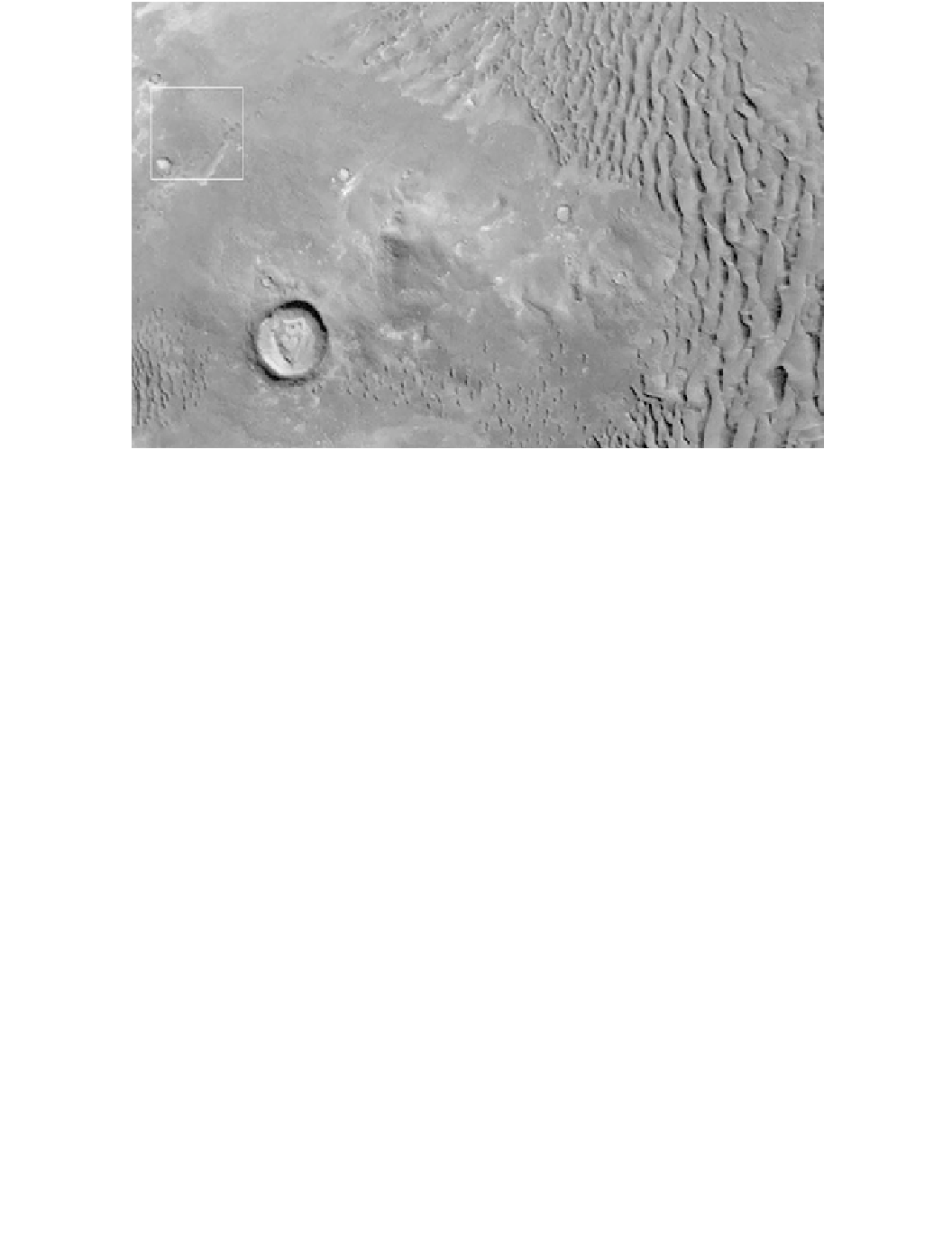Geoscience Reference
In-Depth Information
Fig. 12.15
Viking Orbiter 2 image (575B60) of the floor of Kaiser
crater, acquired in 1978 with a resolution of about 50 m per pixel.
North is up, illumination is from the top right. To the right are large
transverse ridges, while towards the bottom a flock of small barchans
can be seen migrating towards the left. A few small barchans can just
be made out in the box in upper left, an area imaged 20 years later
(Fig.
12.16
) by the Mars Orbiter Camera (MOC) on Mars Global
Surveyor. Image NASA/MSSS
Fig. 12.16
The MOC subframe, 10004, taken with a resolution of
20 m/pixel during the 100th orbit of Mars Global Surveyor on January
21, 1998, is centered at 47.1S latitude, 341.3W longitude and shows
a close-up of some of the smaller, isolated 'fat teardrop' barchan dunes
that occur west of the main dune field. The dune just below the center
of the frame covers an area about 680 m by 480 m in size. The circular
feature in the lower left corner is a small crater that formed by meteor
impact some time before the dunes were present in this area—note the
Yin-Yang accumulation of sand in the crater. This 'small' crater has a
diameter of 1.2 km, the same diameter as the famous 'Meteor Crater'
of northern Arizona, USA., on Earth and a little larger than Endeavour
crater. Image MOC2-33C, NASA/JPL/MSSS


Search WWH ::

Custom Search